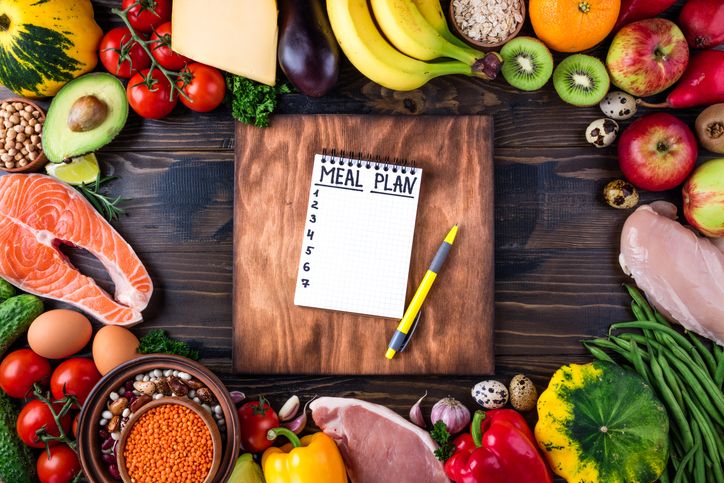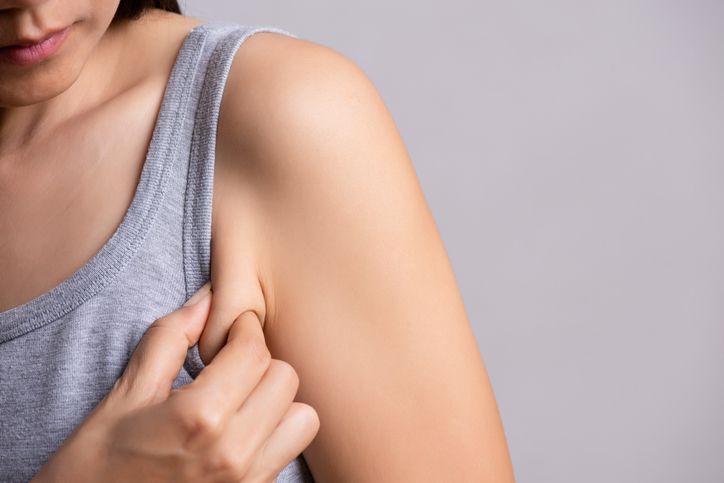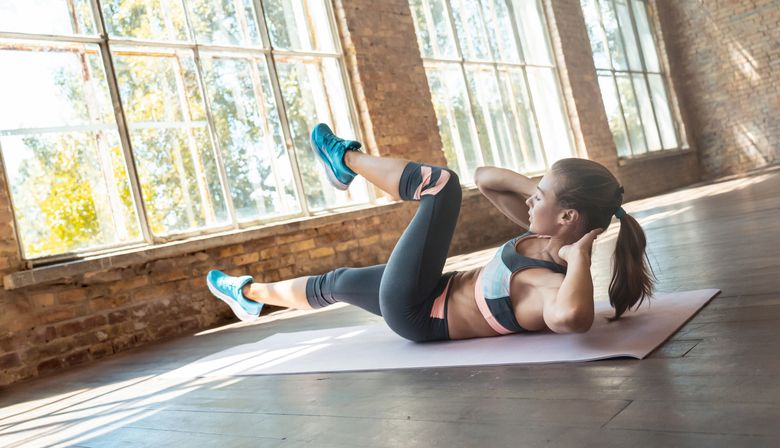- Home
- Trend
- Weight Loss Strategies
- Acne Tips
- Hair Health Information
- Blemish Removal Tips
- Acne Scar Removal Tips
- Muscle Building Techniques
- Intimate Care Tips
- Postpartum Intimate Care
- Eye Bags Wiki
- Tips for Face Slimming
- Secret of Permanent Hair Removal
- Breast Enlargement Tips
- Cure to Snoring
- Marionette Lines
- Skin-Tightening Secrets
Lower body fat loss is a challenge for many people. The thighs, hips, and lower abdomen are common areas where fat accumulates, making it difficult to achieve a toned and sculpted look. While some believe that spot reduction—losing fat in specific areas—is possible, the truth is more complex.
Why Lower Body Fat Is More Stubborn Than Belly Fat

Lower body fat loss presents a unique challenge due to the way the body stores and burns fat. While many people struggle with belly fat, losing weight in the hips, thighs, and buttocks is often even more difficult. The difference lies in fat storage, hormone influence, and metabolic activity, making lower body fat more resistant to breakdown.
The Role of Fat Storage in the Lower Body - Different Types of Body Fat
Not all fat is the same, and the body distributes fat in distinct ways. The two primary types of fat are:
Visceral Fat: The Easier-to-Burn Belly Fat
Visceral fat is found deep within the abdominal cavity, surrounding vital organs like the liver, pancreas, and intestines. This type of fat is metabolically active, meaning the body can break it down and use it as energy more easily. High levels of visceral fat are associated with health risks like heart disease, diabetes, and metabolic disorders. However, the positive aspect is that visceral fat responds quickly to diet and exercise.
Subcutaneous Fat: The Stubborn Lower Body Fat
Subcutaneous fat is the soft, pinchable fat found just beneath the skin, particularly in areas like the thighs, hips, and buttocks. Unlike visceral fat, subcutaneous fat is more resistant to breakdown, making it harder to lose. It serves as a long-term energy reserve and plays a role in insulating and cushioning the body. However, excess subcutaneous fat in the lower body can be frustrating to get rid of, even with consistent exercise and dieting.
Why Women Tend to Store More Lower Body Fat?

One of the main reasons women tend to carry more fat in the lower body is hormonal regulation. Estrogen, the primary female sex hormone, plays a key role in directing fat storage to the hips and thighs. This process serves as an evolutionary advantage, ensuring adequate fat reserves for pregnancy and breastfeeding.
In contrast, men have higher levels of testosterone, which promotes lean muscle mass and fat storage in the abdomen rather than the lower body. As a result, men tend to burn fat more easily, while women often struggle with stubborn lower body fat, even at healthy weight levels.
Why Lower Body Fat Is Harder to Lose
While abdominal fat is more metabolically active, meaning it breaks down faster when the body needs energy, lower body fat is different. The fat cells in the thighs and hips have a higher concentration of alpha-2 receptors, which slow down fat breakdown and make it more resistant to being burned for fuel.
This means that even with a calorie deficit, strength training, and aerobic exercise, the body prioritizes burning visceral fat first, leaving subcutaneous fat in the lower body to be one of the last fat stores to go.
The Impact of Estrogen on Fat Storage
Estrogen plays a dual role in fat metabolism. While it helps regulate fat distribution, it also slows fat breakdown in the lower body. This means that even if you're losing weight overall, fat in the hips and thighs may take longer to disappear.
However, estrogen levels fluctuate with age. As women approach menopause, estrogen levels decline, often leading to a shift in fat storage from the lower body to the abdomen. This is why many women notice increased belly fat after their 40s, even if they previously stored fat primarily in their thighs and hips.
Insulin Resistance and Excess Lower Body Fat
Insulin is another hormone that affects fat storage and metabolism. When the body becomes insulin resistant, it has trouble processing glucose efficiently, leading to increased fat accumulation.
Women with insulin resistance, often linked to polycystic ovary syndrome (PCOS) or metabolic syndrome, tend to store more fat in the thighs and hips. Managing insulin levels through a balanced diet, regular exercise, and reducing sugar intake can help prevent excessive lower body fat accumulation.
Cortisol in Stubborn Fat Retention
Cortisol, the stress hormone, is another factor that can make fat loss more challenging. While cortisol is commonly associated with belly fat gain, it can also contribute to lower body fat retention.
High levels of cortisol—often caused by chronic stress, lack of sleep, and poor diet—trigger fat storage as a protective mechanism. When cortisol levels remain elevated for long periods, the body holds onto fat reserves in stubborn areas, making it difficult to shed weight, no matter how much you exercise.
免費體驗
S6 Body Sculpting Treatment
1 Minute Self-Registration
Date should not be before minimal date
Lower Body Workouts: What Works and What’s a Waste of Time?
Targeting lower body fat loss requires a combination of strategic workouts and proper nutrition. Many people focus solely on burning calories, but the key to long-term fat loss lies in building lean muscle mass. More muscle means a higher resting metabolism, allowing your body to burn more fat even at rest. However, not all lower body exercises are effective—some are great for toning and fat loss, while others fail to deliver meaningful results.
The Best Exercises for Burning Lower Body Fat
1. High-Intensity Interval Training (HIIT): The Ultimate Fat Burner
High-Intensity Interval Training (HIIT) is one of the most efficient ways to lose body fat, especially in stubborn areas like the thighs, hips, and glutes. This type of workout alternates between short bursts of intense activity and recovery periods, allowing you to maximize calorie burn in a shorter amount of time.
How HIIT Helps with Lower Body Fat Loss
• Increases metabolism: HIIT triggers the afterburn effect (excess post-exercise oxygen consumption, or EPOC), meaning your body continues burning calories long after your workout ends.
• Targets multiple muscle groups: Exercises like jump squats, sprinting, and lunges engage the legs, glutes, and core, promoting overall fat loss while sculpting lower body muscles.
• Time-efficient: A 20-30 minute HIIT workout can burn more fat than a 60-minute steady-state workout, making it ideal for those with busy schedules.
2. Strength Training: Building Muscle for Lasting Fat Loss
Strength training is crucial for lower body fat reduction because muscle burns more calories than fat, even at rest. The more muscle mass you build, the more efficient your body becomes at burning fat throughout the day.
Best Strength Exercises for the Lower Body
• Squats: One of the most effective exercises for activating leg muscles, squats engage the quads, hamstrings, and glutes while boosting overall calorie burn.
• Lunges: Great for targeting thighs and hips, lunges improve muscle endurance and balance, helping sculpt the lower body.
• Deadlifts: Not only do deadlifts strengthen the hamstrings, glutes, and lower back, but they also help improve posture and core stability.
• Hip Thrusts: This exercise isolates and strengthens the glutes, leading to a firmer, more toned lower body.
3. Endurance-Based Aerobic Exercises: Sustainable Fat Loss
While HIIT and strength training are excellent for boosting metabolism, aerobic exercises play a key role in long-term fat loss and cardiovascular health. These workouts promote steady fat burning without overloading the muscles.
Best Aerobic Exercises for Lower Body Fat Loss
• Brisk Walking: A simple yet effective way to increase daily calorie burn while improving blood circulation in the legs.
• Cycling: Strengthens leg muscles while promoting fat loss in the thighs and hips.
• Swimming: Engages the entire body, tones leg muscles, and provides a low-impact option for fat burning.
By incorporating a mix of HIIT, strength training, and endurance workouts, you maximize fat loss and muscle definition, ensuring a balanced approach to lower body transformation.
What Doesn’t Work? Avoid These Common Mistakes
Not all workouts contribute to lower body fat loss—some are ineffective or even counterproductive. If you're serious about burning fat and reshaping your legs, thighs, and hips, avoid the following mistakes:
The Myth of Spot Reduction
Many people believe that targeted exercises like inner thigh lifts or leg raises can eliminate fat in specific areas. However, spot reduction is a myth—the body burns fat as a whole, not in isolated areas. Doing hundreds of leg lifts won’t specifically burn thigh fat. Instead, focus on overall fat loss through a combination of calorie-burning workouts and muscle-building exercises.
Waist Trainers and Compression Gear: Temporary Illusions
Waist trainers and compression leggings are often marketed as fat-burning tools, but they do not actually help with losing fat. Waist trainers compress the abdomen, creating the appearance of a smaller waist, but this is temporary and does not reduce fat cells.
On the other hand, compression gear increases sweating, leading to water loss—but once you rehydrate, the weight returns. Long-term use of waist trainers can weaken core muscles, making it harder to build strength and burn calories effectively.
Why Diet and Exercise Alone May Not Be Enough

Even with consistent workouts and a healthy diet, some people still struggle with stubborn lower body fat. One key reason is poor blood circulation in the thighs, hips, and glutes.
Fat burning occurs when fat cells break down and are transported through the bloodstream to be used as energy. However, lower body fat has lower blood circulation compared to abdominal fat, meaning fewer fat-burning hormones reach these areas. This is why many people notice that they lose weight in their upper body first, while the thighs and hips remain unchanged.
In order to tackle certain areas, S6 Body Sculpting Treatment is available as a non-invasive solution to break down stubborn fat cells effectively.
How S6 Body Sculpting Treatment Helps Reduce Lower Body Fat
Lower body fat can be one of the most challenging areas to slim down, even with consistent exercise and a well-balanced diet. Many people struggle with stubborn fat in the thighs, hips, and lower abdomen, where fat cells are more resistant to breakdown. S6 Body Sculpting Treatment provides a scientifically backed, non-surgical fat reduction solution that effectively targets these problem areas without the need for invasive procedures.
Why S6 Body Sculpting Treatment Works
The S6 Body Sculpting process is designed to deliver visible results quickly while ensuring a safe, non-invasive experience.
Targeting Stubborn Fat Pockets
This treatment focuses on specific fat deposits in the thighs, hips, and lower abdomen, where fat cells are naturally more resistant to breakdown. Traditional weight loss methods often fail to specifically target these areas, but S6 Body Sculpting precisely eliminates unwanted fat, creating a more contoured appearance.
Bio-Laser Technology for Fat Cell Breakdown
S6 Body Sculpting utilizes medical-grade bio-lasers to penetrate deep into fat layers, triggering fat cell disintegration. Once the fat cells are broken down, the body naturally processes and removes them through the lymphatic system, ensuring long-lasting fat reduction.
Vacuum Suction for Lymphatic Drainage and Skin Tightening
In addition to eliminating excess fat, S6 Body Sculpting improves blood circulation and lymphatic drainage through vacuum suction technology. This process helps the body flush out broken-down fat cells more efficiently, while also promoting firmer, tighter skin. Many traditional fat loss methods can lead to loose skin, but S6 Body Sculpting enhances skin elasticity, providing a smooth, toned finish.
A Non-Invasive Alternative to Liposuction
Unlike surgical procedures like liposuction, which require incisions, anesthesia, and significant recovery time, S6 Body Sculpting is completely non-invasive. The treatment is pain-free, requires no downtime, and allows individuals to return to everyday activities immediately after their session.
Who Can Benefit from S6 Body Sculpting Treatment?
S6 Body Sculpting is ideal for individuals who:
Struggle with Stubborn Lower Body Fat
If exercise and a healthy diet haven’t been enough to reduce persistent fat in the thighs, hips, and lower abdomen, this treatment can help target fat cells that are resistant to traditional weight loss methods.
Want a Non-Invasive Fat Reduction Solution
For those seeking a safe, effective alternative to liposuction, S6 Body Sculpting offers long-lasting fat loss without the risks associated with surgical fat removal.
Are Looking to Enhance Muscle Toning and Skin Tightening
In addition to fat reduction, S6 Body Sculpting improves muscle definition and skin firmness, making it perfect for those who want a sculpted, toned lower body.
免費體驗
S6 Body Sculpting Treatment
1 Minute Self-Registration
Date should not be before minimal date
Achieve Your Ideal Lower Body Shape with S6 Body Sculpting
If you're ready to eliminate stubborn lower body fat, tighten skin, and enhance body contours without surgery, S6 Body Sculpting Treatment is the solution you've been looking for. With its advanced fat-targeting technology, this treatment delivers noticeable, long-lasting results, helping you achieve a more sculpted, defined physique.
Take the next step toward your ideal body shape—book a consultation today and experience the science-backed power of S6 Body Sculpting!
S6 Body Sculpting Treatment免費體驗
S6 Body Sculpting Treatment
1 Minute Self-Registration
Date should not be before minimal date
FAQ

1. How can I reduce lower body fat without losing too much muscle?
To reduce body fat while preserving muscle, focus on creating a caloric deficit through a balanced mix of strength training and cardiovascular exercise. A high protein diet supports muscle growth and recovery, preventing excessive muscle loss.
2. Does my body fat percentage affect how I lose leg fat?
Yes, your body fat percentage determines how quickly you’ll notice changes in your leg fat. Individuals with higher body fat percentages may see initial fat loss more evenly distributed, while those with lower body fat percentages might find it harder to shed fat in specific areas. Consistency in eating whole grains, lean protein, and vegetables while maintaining regular physical activity helps improve body composition over time.
3. Can certain foods help with lower body fat loss?
Yes, healthy eating habits play a crucial role in lower body fat reduction. Protein intake from sources like lean meats, eggs, and dairy products helps with muscle retention while keeping you full longer. Foods rich in fiber, such as vegetables, fruits, and whole grains, aid digestion and prevent overeating. Adding healthy fats, like those found in olive oil and nuts, supports hormonal balance and enhances the body’s ability to burn fat efficiently.
4. Why do I feel hungry more often when trying to lose lower body fat?
When in a caloric deficit, the body signals hunger due to reduced energy intake. Choosing nutrient-dense foods like protein-rich meals, fiber-packed vegetables, and healthy fats helps manage hunger while keeping energy levels stable. Small changes, such as eating more frequently in smaller portions and staying hydrated, can prevent cravings and support long-term fat loss goals.
5. How does physical activity improve lower body fat loss and overall health?
Engaging in regular physical activity increases calorie burn and improves heart rate regulation, which is essential for maintaining overall health. Strength-based exercises enhance muscle growth, while aerobic activities like cycling, jogging, and brisk walking promote fat loss. A well-rounded approach that includes various methods of exercise and healthy eating habits ensures sustainable lower body fat reduction while improving body composition.








